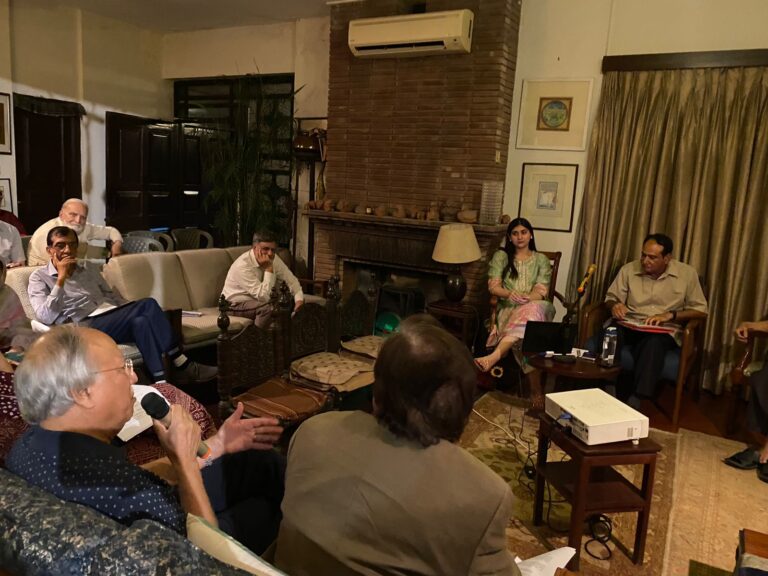THAAP recently hosted an engaging and thought-provoking talk titled “Culture and Development: The Chinese Path”, delivered by Engr. Siddiq-ur-Rehman Rana, with participation from his daughter scholar Bimal Rehman. The session attracted leading academics, intellectuals, and development practitioners, sparking an insightful discussion on how Pakistan can learn from China’s extraordinary journey of transformation.
Engr. Siddiq-ur-Rehman Rana traced China’s remarkable progress over the last eight decades, from a war-torn nation in 1949 to becoming the world’s second-largest economy and a global technological leader by 2025. In contrast, he pointed out, Pakistan’s development has been uneven and slower, marked by frequent political upheavals, weak institutions, and fragmented policies.
Highlighting three broad phases of China’s development — Foundation & Survival (1949–1978), Reform & Opening Up (1978–2000), and Global Integration & Technological Leap (2000–2025) — Rana emphasized that China’s success lay not in ideology but in execution. Its long-term planning, pragmatic reforms, and massive investment in human capital helped lift more than 800 million people out of poverty while building world-class infrastructure and globally competitive industries.
In comparison, Pakistan’s governance and economic policies often remained short-term, aid-driven, and vulnerable to political instability. As Rana noted, “China treated development as a national mission: non-negotiable and technocratic. Pakistan, on the other hand, often treated development as a by-product of politics.”
The talk also explored practical lessons for Pakistan. Key strategies included creating a National Development Council to ensure long-term policy continuity, replicating Special Economic Zones (SEZs) with smarter frameworks, scaling up human capital investment through vocational training and STEM education, and adopting targeted industrial policies to nurture national champions in IT, pharmaceuticals, surgical instruments, and agro-processing.
Rana underscored the need for Pakistan to embrace digital governance, promote meritocracy, and cultivate a culture of self-reliance. He suggested that Pakistan could become a regional trade hub by leveraging its strategic geography, developing Gwadar as a global logistics center, and integrating into Central Asian and Chinese trade corridors.
The session concluded with a forward-looking vision: by its centenary in 2047, Pakistan could realistically become a $1.5 trillion economy, a hub for IT and light manufacturing, and an energy-secure nation, if it applies discipline, patience, and consistency, as China did.
The talk left participants with a powerful message: Pakistan does not lack resources, but discipline and direction. Learning from China’s path, Pakistan’s rise remains possible provided it moves from dependency to determination.

